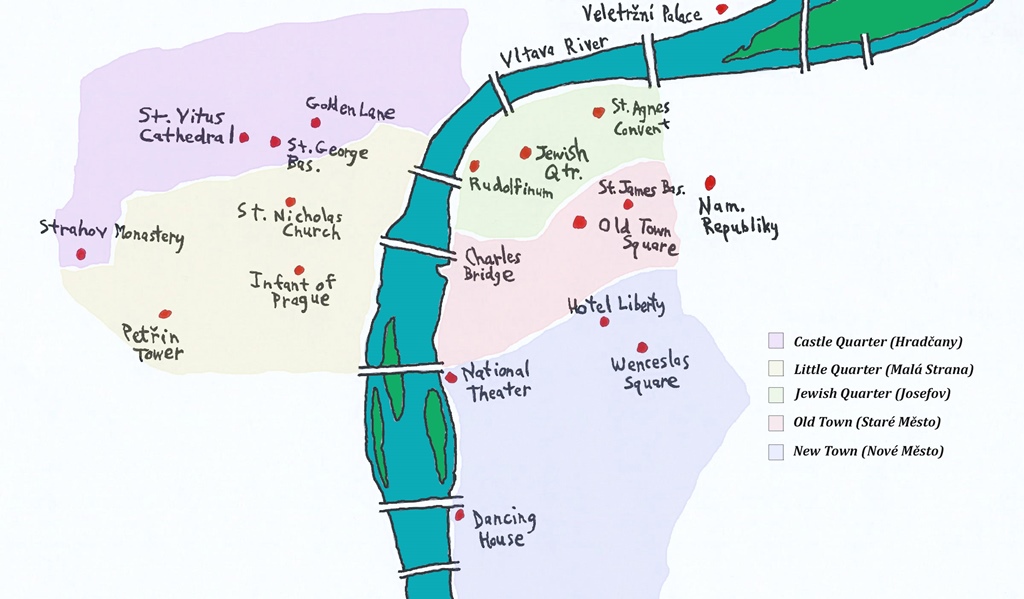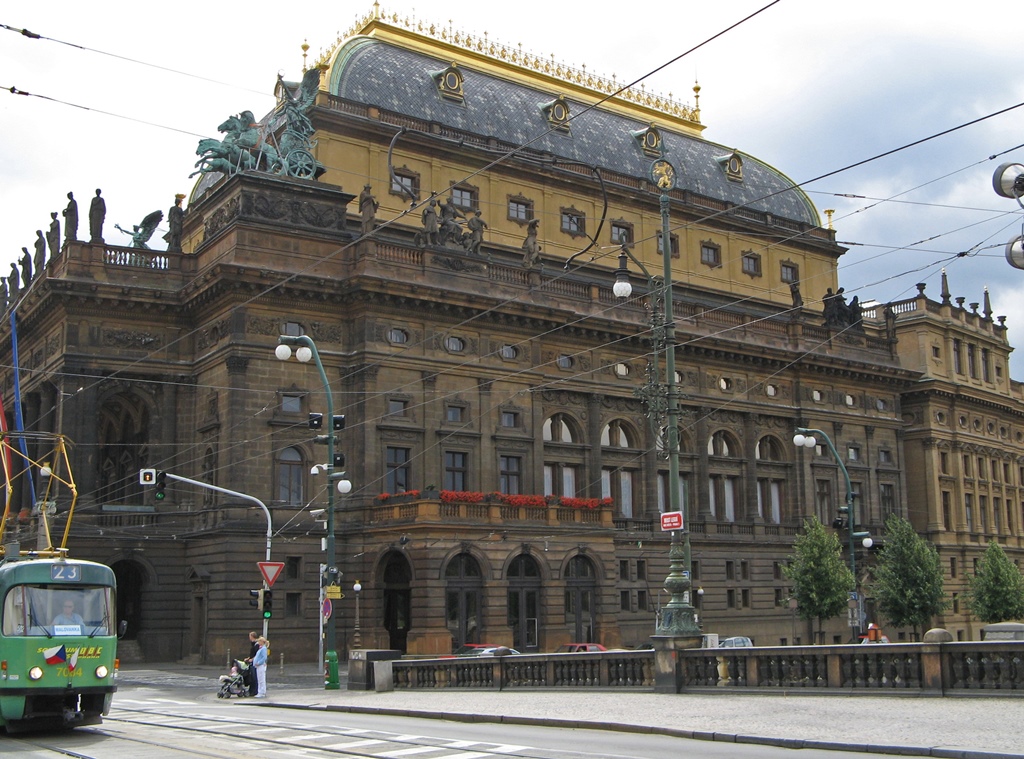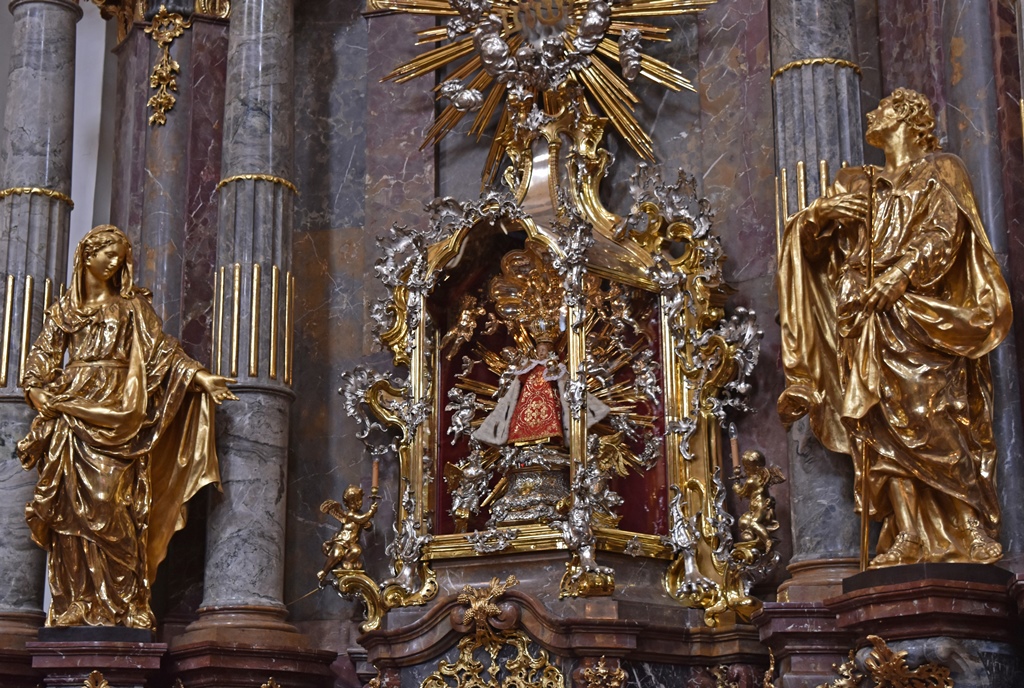Central Prague, with Historical Quarters
We started our first full day in Prague with the intention of visiting some sites on the
other side of the river from our hotel, starting with the famous Infant of Prague. The Infant
(full name "Infant Jesus of Prague") can be found in a church called the Church of Our Lady
Victorious, located in Prague’s Little Quarter. As shown in the map above, Prague is divided
into quarters, of which there are five (math majors: calm down, it’s just an expression) in
the historical center of the city. There are additional quarters, but tourists generally
aren’t too interested in them. The designation of the historical quarters goes back to the
14th Century, when Holy Roman Emperor Charles IV was rebuilding the city. These quarters are
known as the Castle Quarter, the Little Quarter (also called the Lesser Quarter or the Lesser
Town), the Jewish Quarter, the Old Town and the New Town. Our hotel was located in the New
Town (Nové Město in Czech), which isn’t particularly new, having been established in
1348. But it was the last quarter Charles founded, so it’s newer than the other ones. Our
Lady Victorious is in the Little Quarter (Malá Strana), which is actually the
second-largest of the historical quarters (I’m sure it made sense at the time). Since
Malá Strana is on the other side of the Vltava, we needed to find a bridge, and the
closest one seemed to be the one called the Legion Bridge (Most Legií, named for the
Czechoslovak Legion, a group of volunteers who fought for the Allies in World War I). On the
way we passed this shop, which seemed to be some kind of paradise for the nicotine-deranged,
or maybe some odd eastern European theme park.
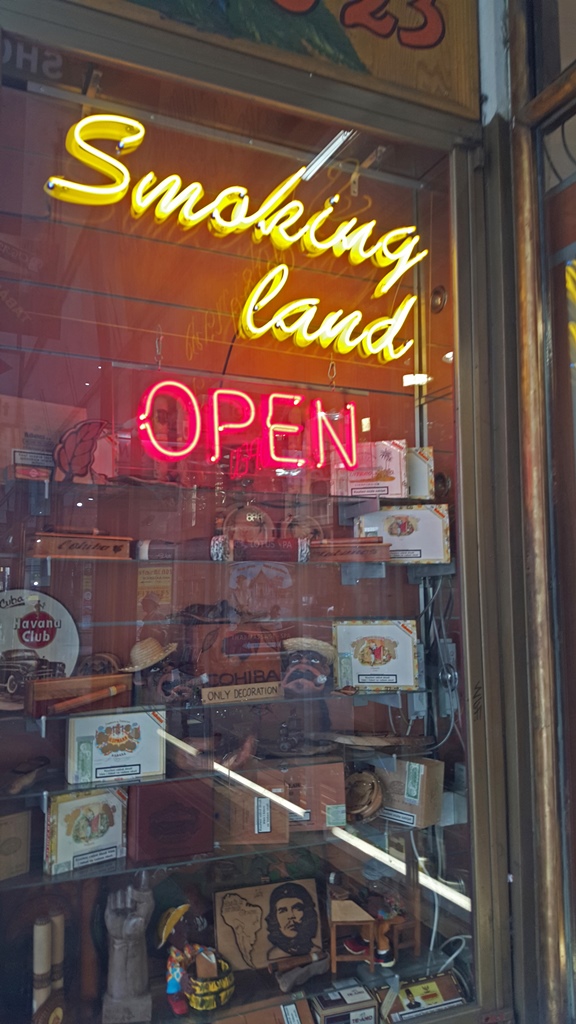
Smoking Land
At the eastern end of the Legií Bridge is this building, the National Theatre. The Theatre
opened in 1881 (sort of – after 12 performances it caught on fire and had to be closed for
repairs until 1883), and is covered with allegorical decorations inspired by Slavonic
mythology.
National Theater
We started to cross the bridge, and had a nice view back toward the east bank and
upstream to the south. The bridge passes over or near three small islands in the river,
which appear to be used as parkland.
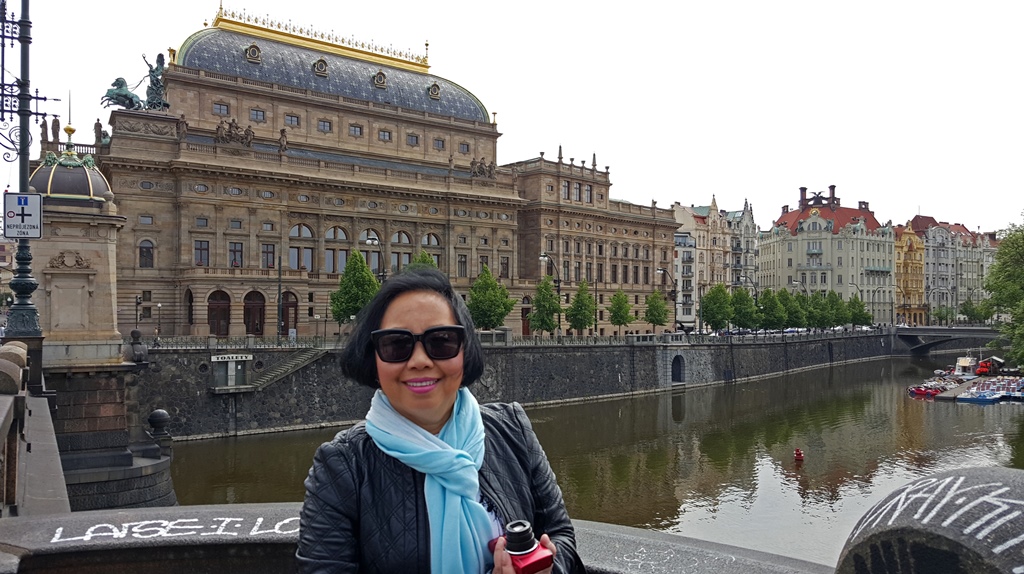
Nella and National Theater
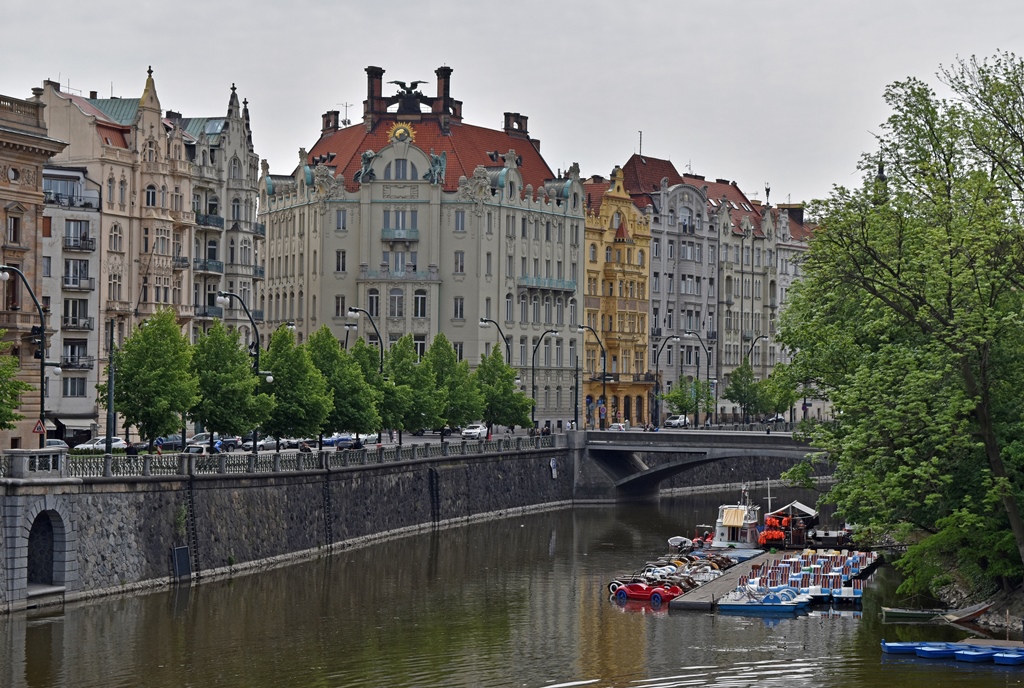
Buildings on East Bank of Vltava
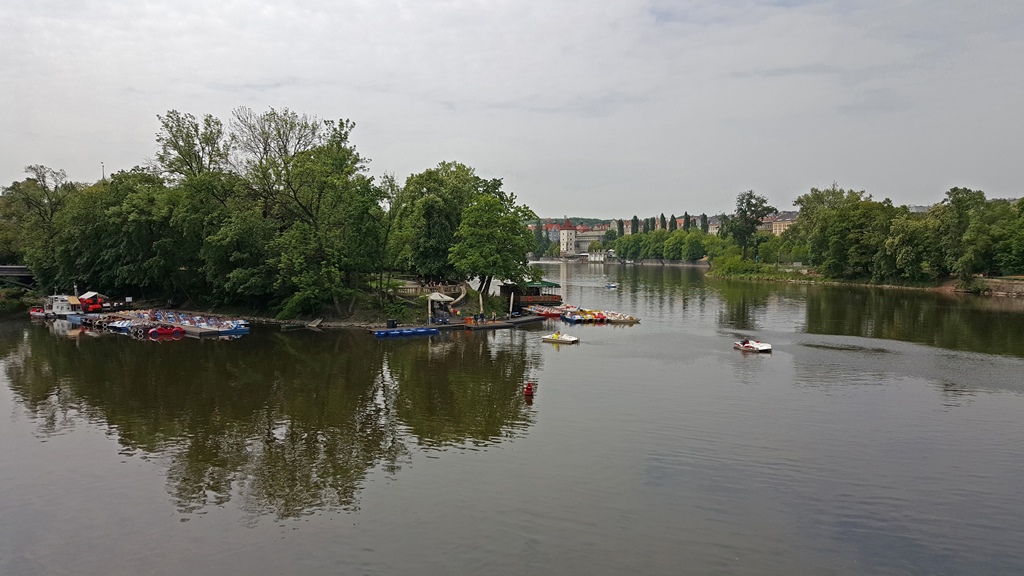
Slovansky Island and Vltava River
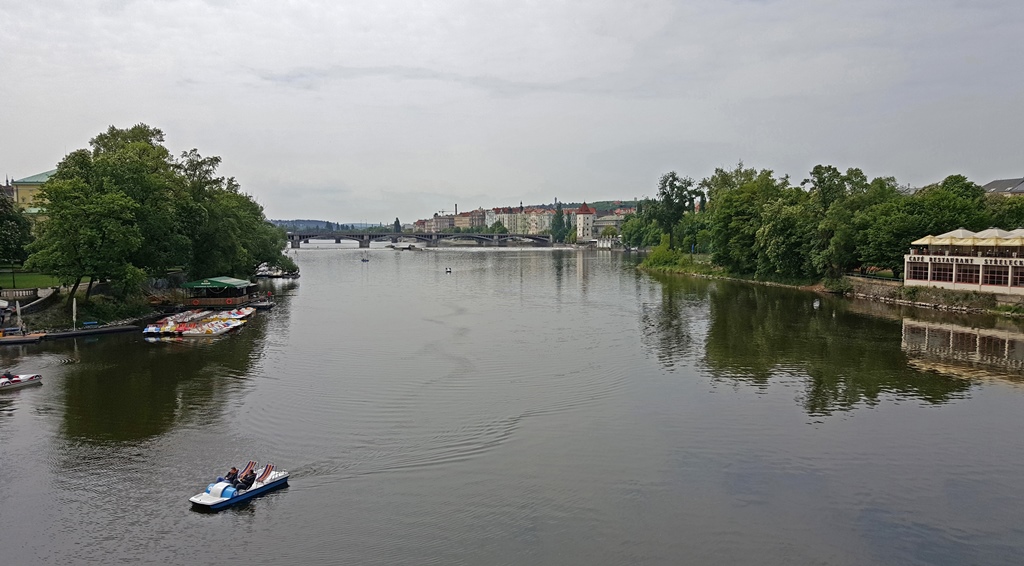
Vltava River and Jiráskuv Bridge
Looking downstream to the north, we could see the next bridge crossing the river, which
is an historical footbridge called the Charles Bridge (Karlův Most – yes, a most
is a bridge). There will be more on this bridge in a future page.
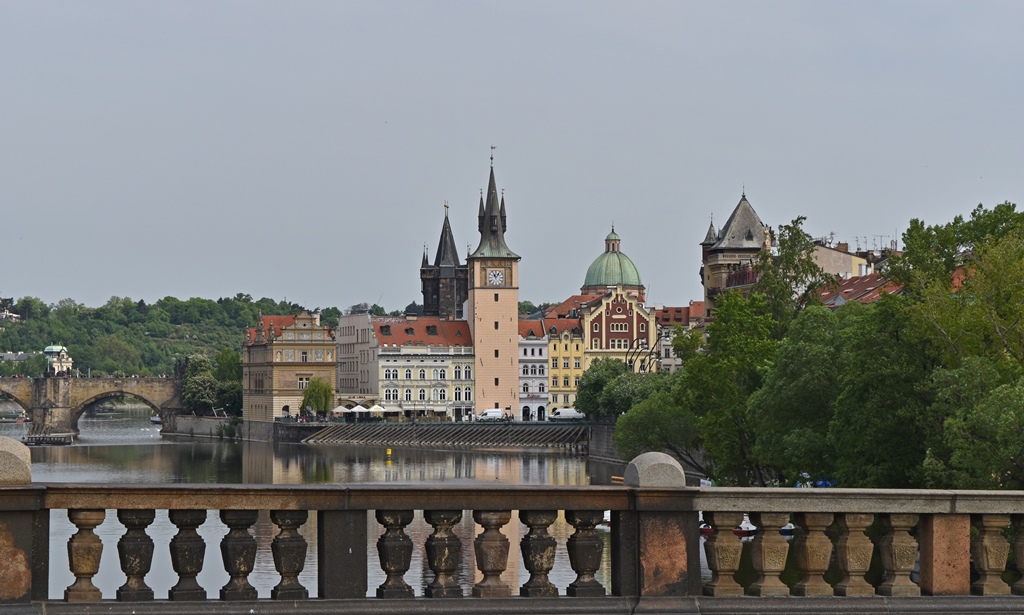
Buildings at East End of Charles Bridge
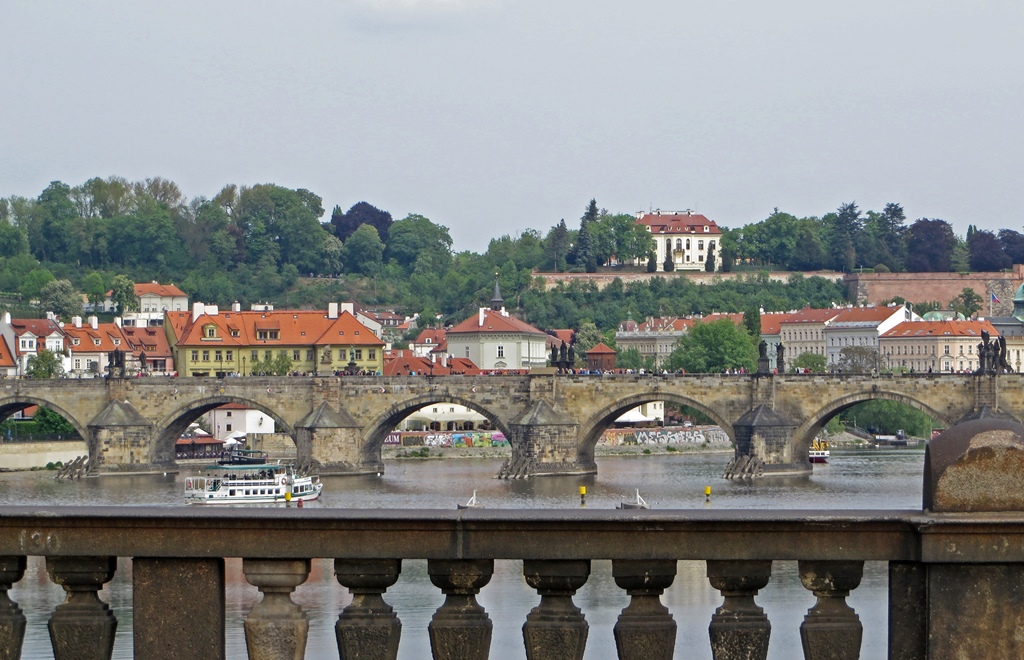
Charles Bridge
We continued across the bridge and reached the west bank.
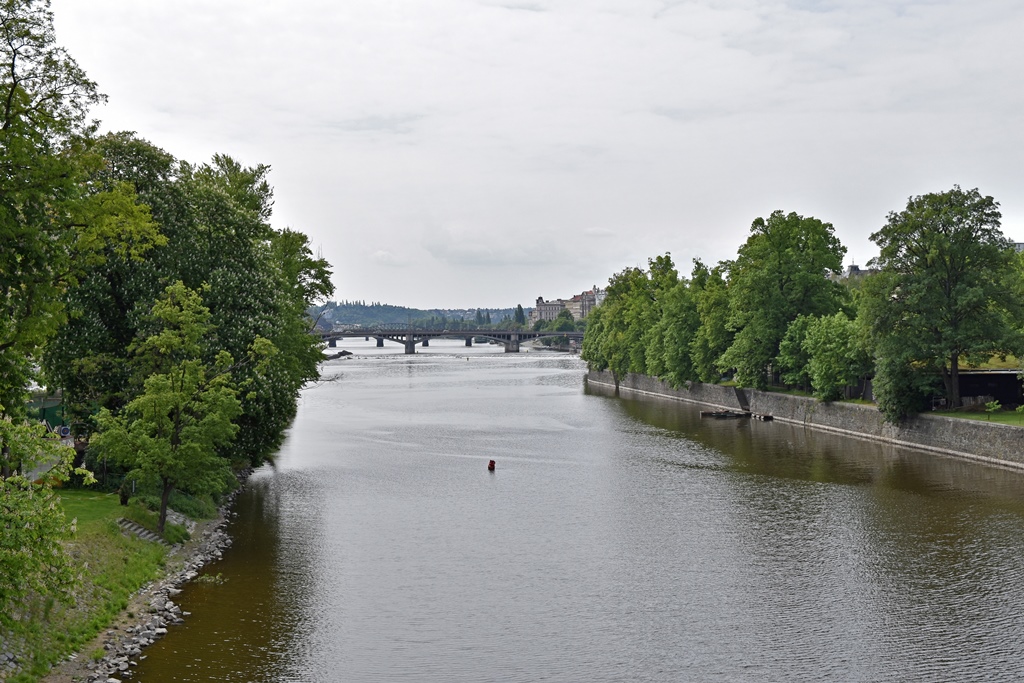
Jiráskuv Bridge Between Islands
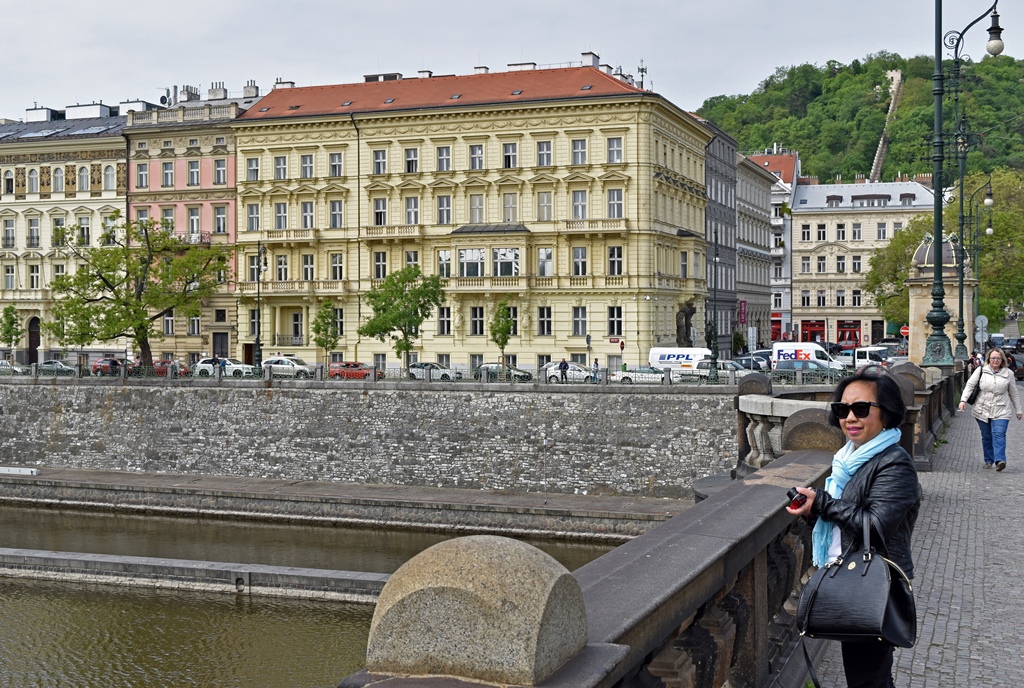
Nella and West Bank
After a block we turned right and soon reached the
Church of Our Lady Victorious. The
church was originally built as the Lutheran Church of the Holy Trinity between 1611 and
1613. But after the Protestants were defeated in 1620 near the beginning of the Thirty
Years’ War, Holy Roman Emperor Ferdinand II turned the church over to the order of
Discalced Carmelites, and the church has been Catholic ever since. A reconstruction
project between 1636 and 1644 resulted in the church acquiring the appearance it has now,
sort of a Baroque/Renaissance hybrid, and a monastery was attached to it. Work on the
church interior proceeded through the 17th and 18th Centuries, with the Carmelites making
use of a variety of talented artists. But the church was taken away from them in 1784,
when the monastery was dissolved by decree of Emperor Joseph II, and the church became a
parish church. With the church no longer under the care of the Discalced Carmelites, it
suffered from neglect over the next two centuries (worship was curtailed for much of the
20th Century, due to Nazi and Communist occupation), but in 1993 the Prague Archbishop
requested that the Carmelites be allowed to return. The request was granted, and the
Carmelites, along with the Carmelite Sisters of the Child Jesus, appear to have done a
fine job with the place, restoring it both physically and as a popular pilgrimage
destination.
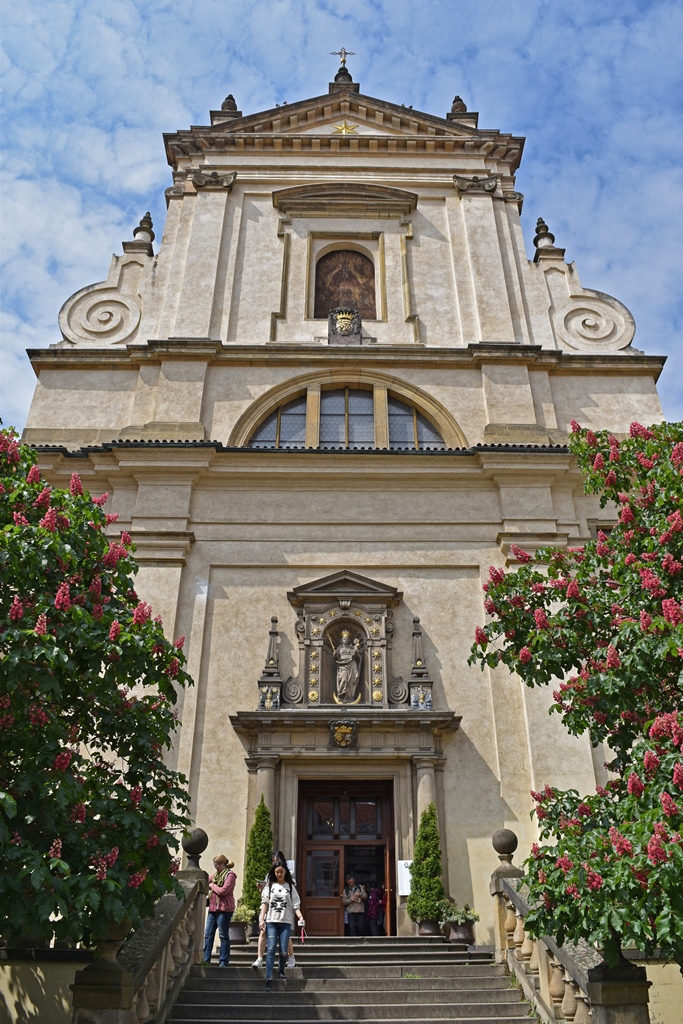
Church of Our Lady Victorious
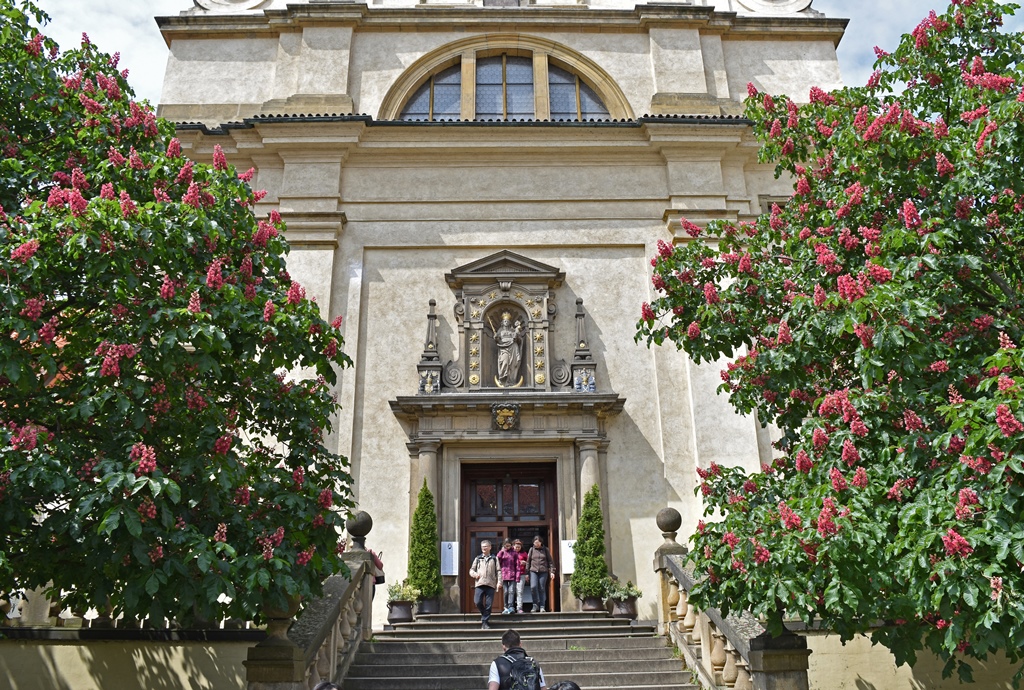
Church of Our Lady Victorious
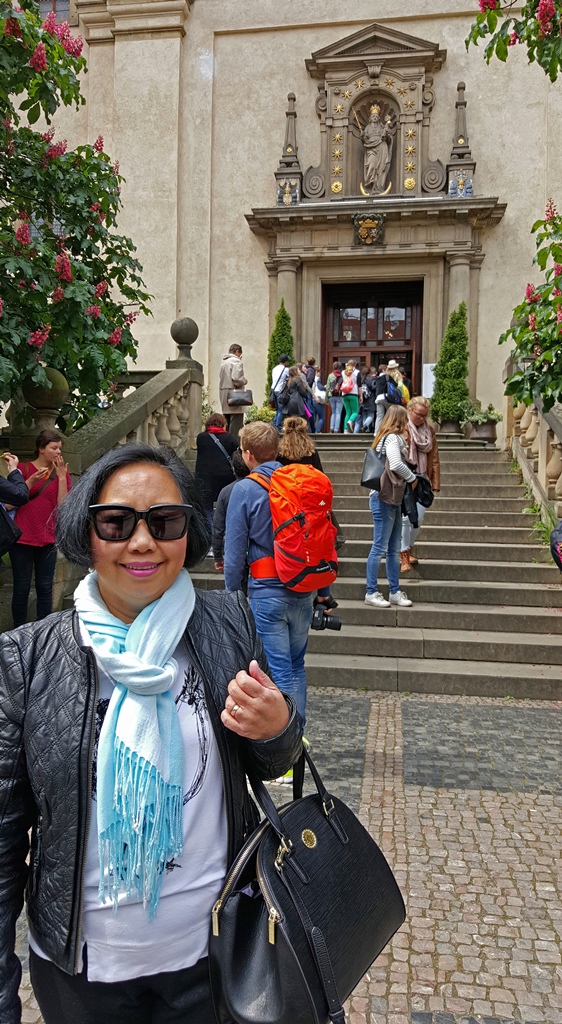
Nella and Church
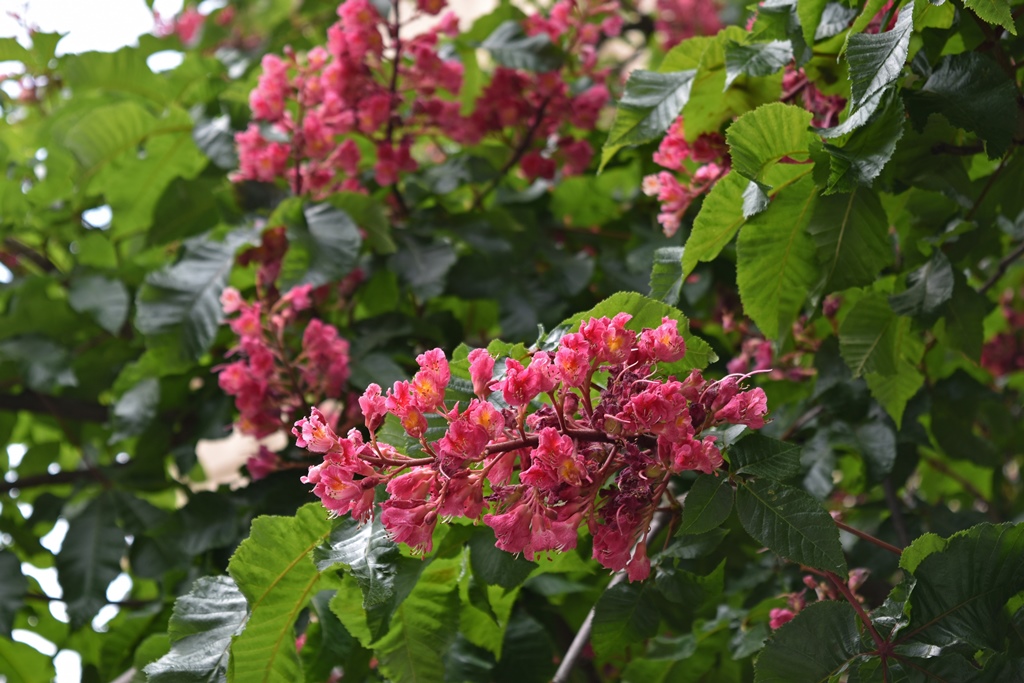
Flowers in Front of Church
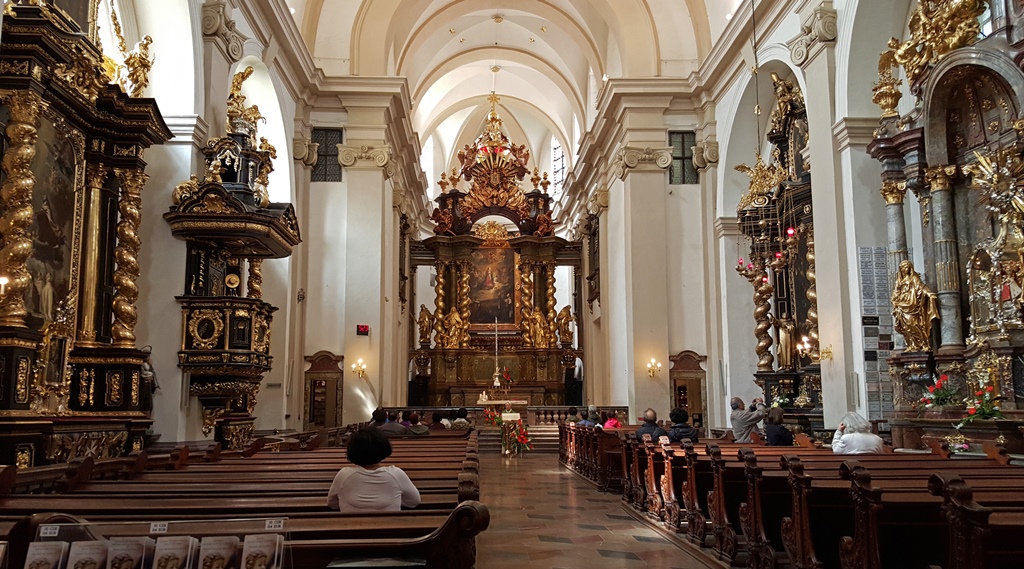
Inside the Church
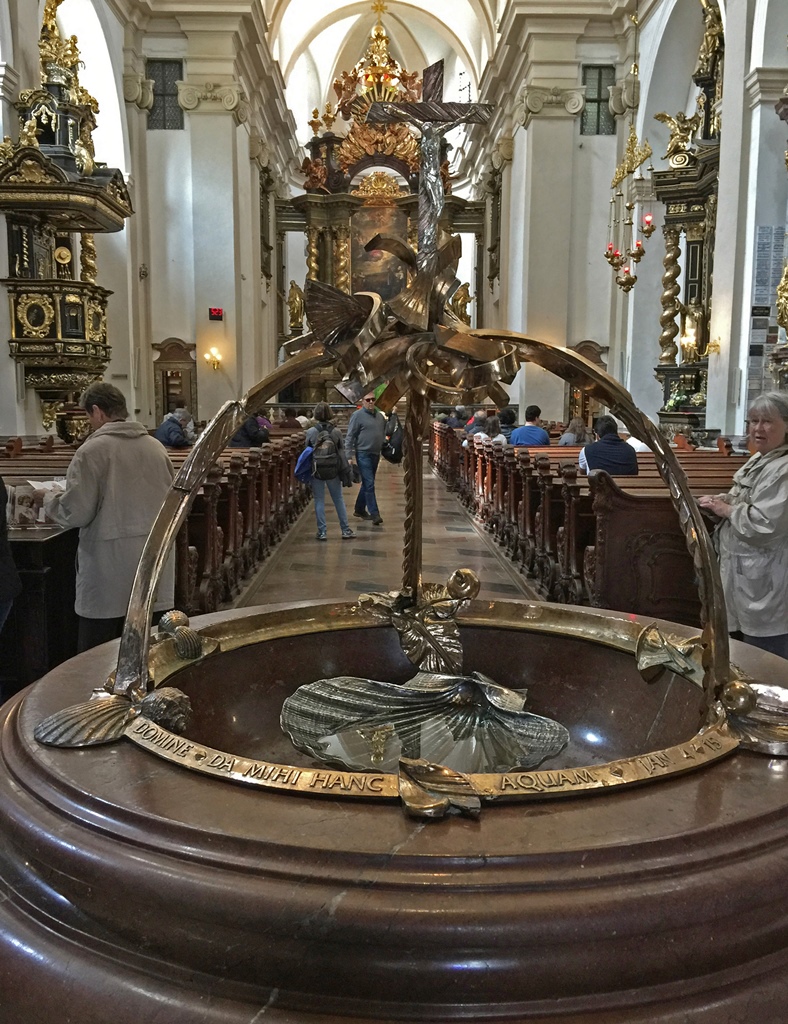
Baptismal Font
“Pilgrimage to what?” you might ask. In case the title of this page didn’t register with
you, the answer is, “To the Infant Jesus of Prague, of course.” And here he is:
The Infant Jesus of Prague
No, not the golden statue on the left, or the golden statue on the right, but the doll
thing in red, in the middle. The Infant Jesus of Prague is 18½ inches tall and is made
from wood, canvas and wax. “Infant” is probably not quite the right name for the figure,
as the consensus is that the figure represents Jesus at the age of 4 or 5 years old. But
this is probably nitpicking – “Infant” it is. The Infant is clearly very well dressed – his
robe of sumptuous red fabric is covered in gold which is probably real gold leaf, and there
may be some embedded jewels (if so, probably genuine as well). Covering the robe is a cloak
of ermine. Not seen, there is a full-length undergarment of linen. The Infant appears to
be wearing a tiny crown (this is an illusion – due to the fragility of the figure, the crown
is held in a position just above the Infant’s head). In his left hand, the Infant is holding
a small globus cruciger (orb & cross), and his right hand is held up in a posture of
benediction. The Infant possesses about 100 robes, of various colors. Some are on display in a
museum, including one donated by Holy Roman Empress Maria Theresa (maybe the others are kept
in a toddler-sized closet somewhere). The color of robe worn by the Infant at a given time
is significant. On normal days, green is worn; red is for Pentecost (as in our case) or
Holy Week; purple is for Lent or Advent; and white is for Christmas, Easter or other
celebrations. There is also a collection of crowns. The newest crown was brought by Pope
Benedict XVI when he came to visit in September of 2009 (he also said a special prayer,
which can be found here). And, of
course, the Infant lives in his own purpose-built chapel, in the middle of the epistle
(right) side of the church.
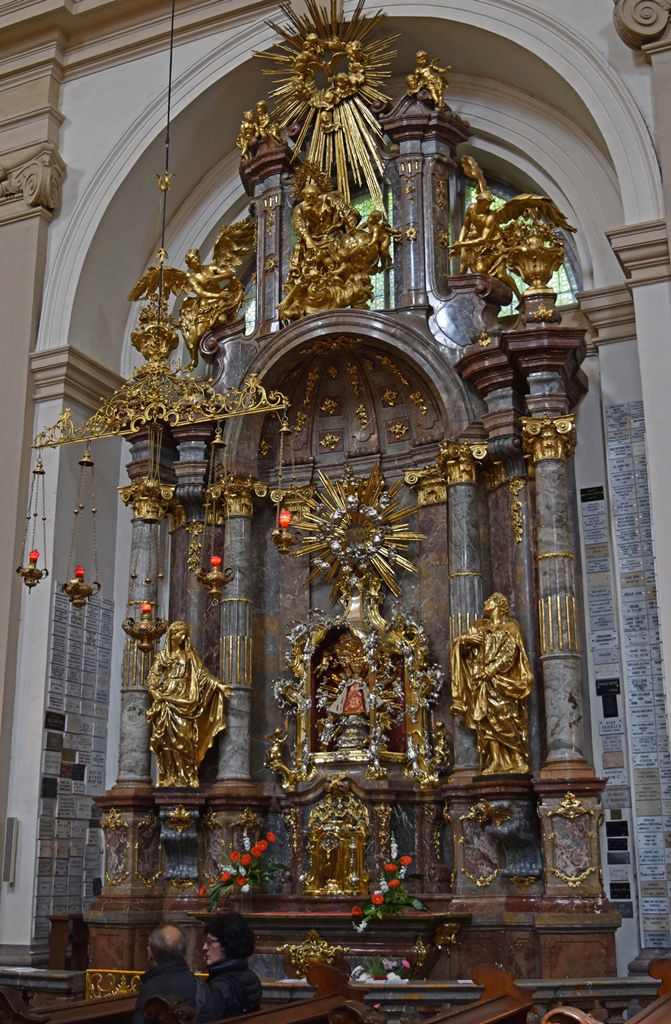
Altar of the Child Jesus
So what’s all the fuss about? Why do so many people come to visit this Infant Jesus? The
answer, as usual, is in the history. The figure of the young Jesus is thought to have been
created, probably by an anonymous monk, sometime in the 16th Century in Spain. Its experiences
in Spain are somewhat murky (a legend says that it was owned for a time by St. Teresa of Ávila),
but its move to Bohemia is pretty well documented, when it was brought by a Spanish Duchess
who also brought her formidible name (María Maximiliana Manriquez de Lara y Mendoza) when she
married Czech nobleman Vratislav of Pernstyn in 1556. She passed the figure along to her
daughter, Polyxena of Lobkovic, who eventually donated it to the monastery in 1628. At the
monastery, the Jesus figure was popular with the novitiates (monks-in-training), and they used
it in their everyday worship. But not for long, as the novitiate program at the monastery was
discontinued in 1630. And in 1631, the Swedish army occupied Prague (the Thirty Years’ War was
still in progress) and the Carmelites took the opportunity to leave town in haste. The
occupiers plundered things that looked valuable, but were not interested in the Baby Jesus
figure.
Eventually the occupiers cleared out, and the Carmelites returned in 1637. Among them was
a Father Cyril, who had been a novice during the Infant Jesus years, and he sadly found the
figure in a pile of junk, with both of its arms broken off. While praying, he heard the Infant
Jesus say to him, “Have mercy on me and I will have mercy on you. Give me my arms and I will
give you my peace. I will bless you as much as you will venerate me!” Father Cyril found
someone to make new arms for the figure, and good things started to happen for the monastery
and for the city. Word got out, and a long string of answered prayers and miraculously cured
ailments began. Survival of the city during a Swedish siege in 1639 was credited to the Infant.
The Infant was moved to its present location in 1741, to accommodate the traffic, and a worthy
altar was built for it in 1776. The Infant’s notoriety decreased significantly after 1784,
when the monastery was dissolved, but there was a revival in 1879, when the Infant was used to
raise money for renovation of the altar. Many appeals are made to the Infant up to the present
day. In the church gift shop, it’s even possible to buy your own Infant of Prague, though I’m
not sure whether praying to a copy will work as well.
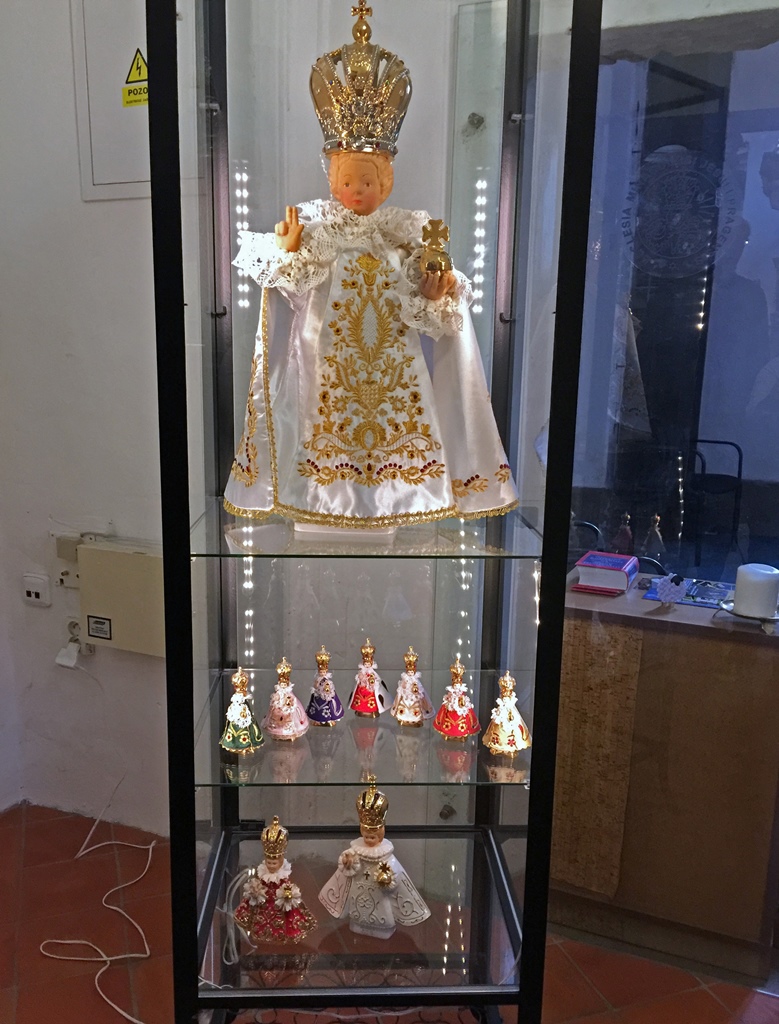
Infants in Gift Shop
While the Infant is what most visitors come to see and venerate, it shouldn’t be forgotten
that Our Lady Victorious is a functioning church, and a lovely one at that. During our visit,
there was a mass going on, but we were allowed to walk around and take some pictures, as long
as we weren’t too annoying about it. The side altars seemed to follow a gilded baroque
theme - here’s some of what there was to see.

Inside the Church (Mass in Progress)
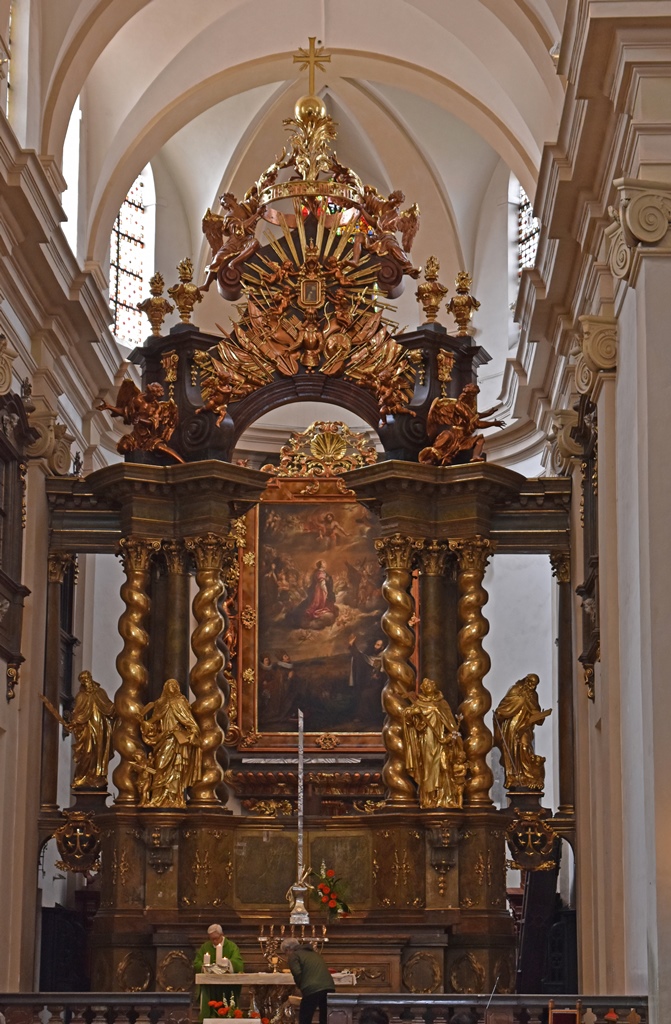
Main Altar
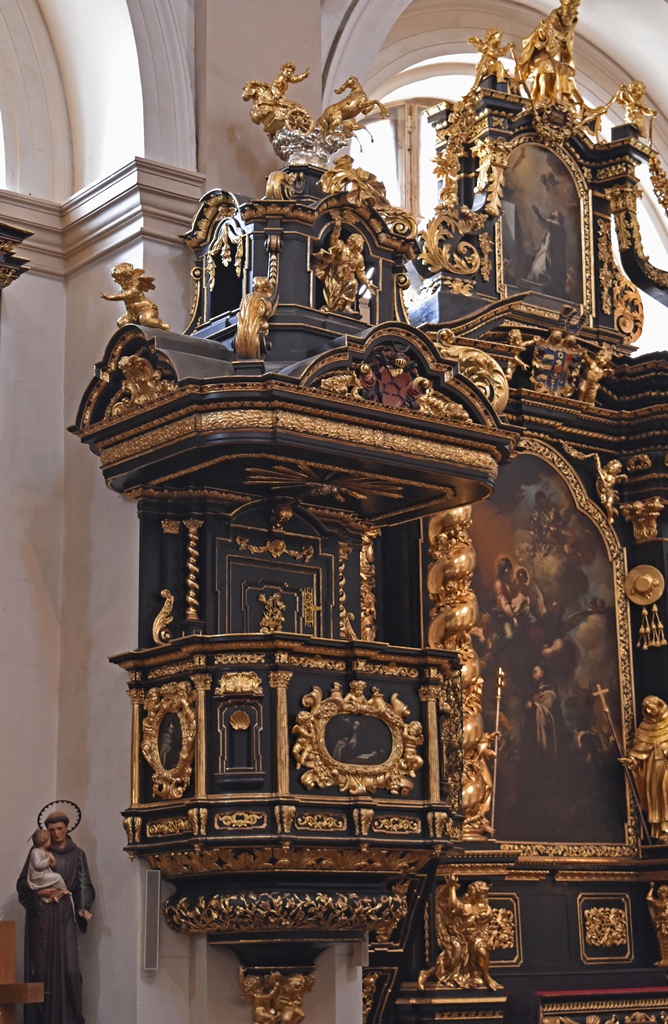
Pulpit
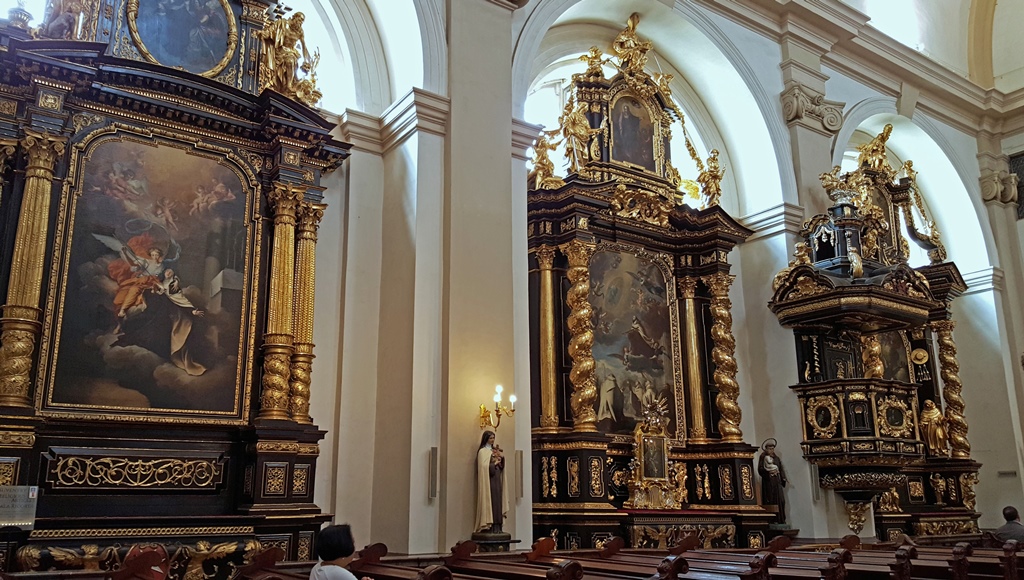
Side Altars (Gospel Side) and Pulpit
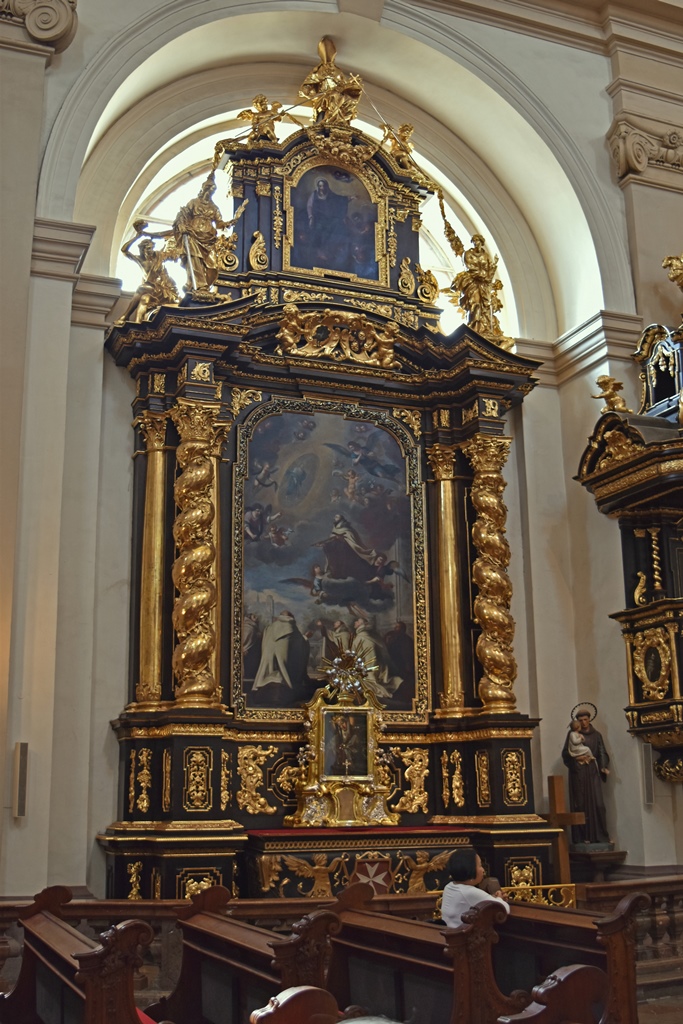
Altar of St. John of the Cross
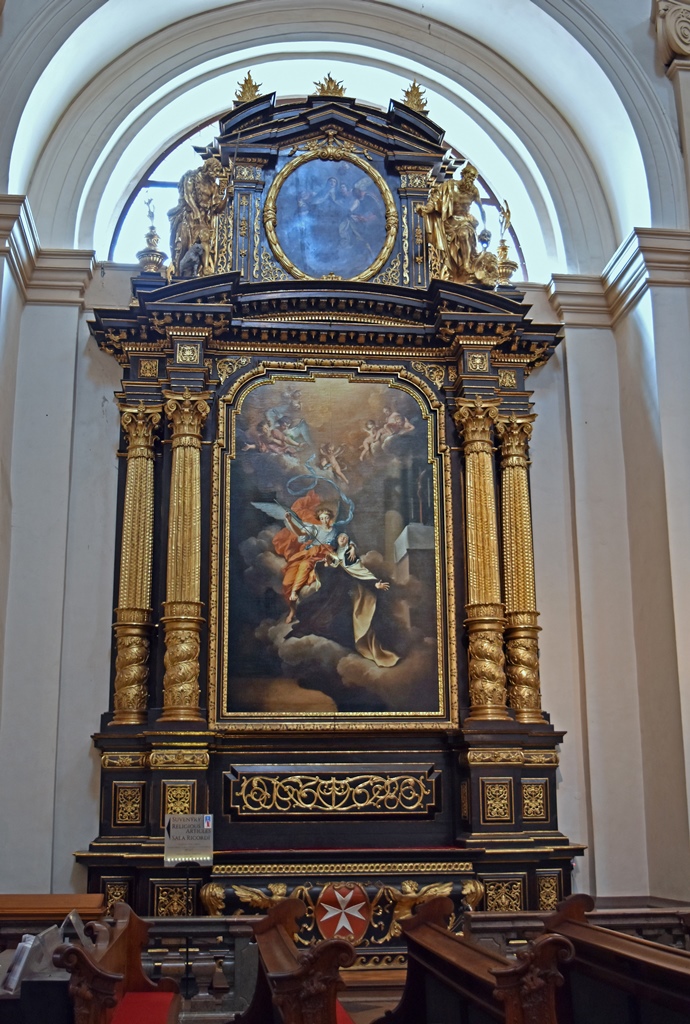
Altar of St. Teresa of Avila
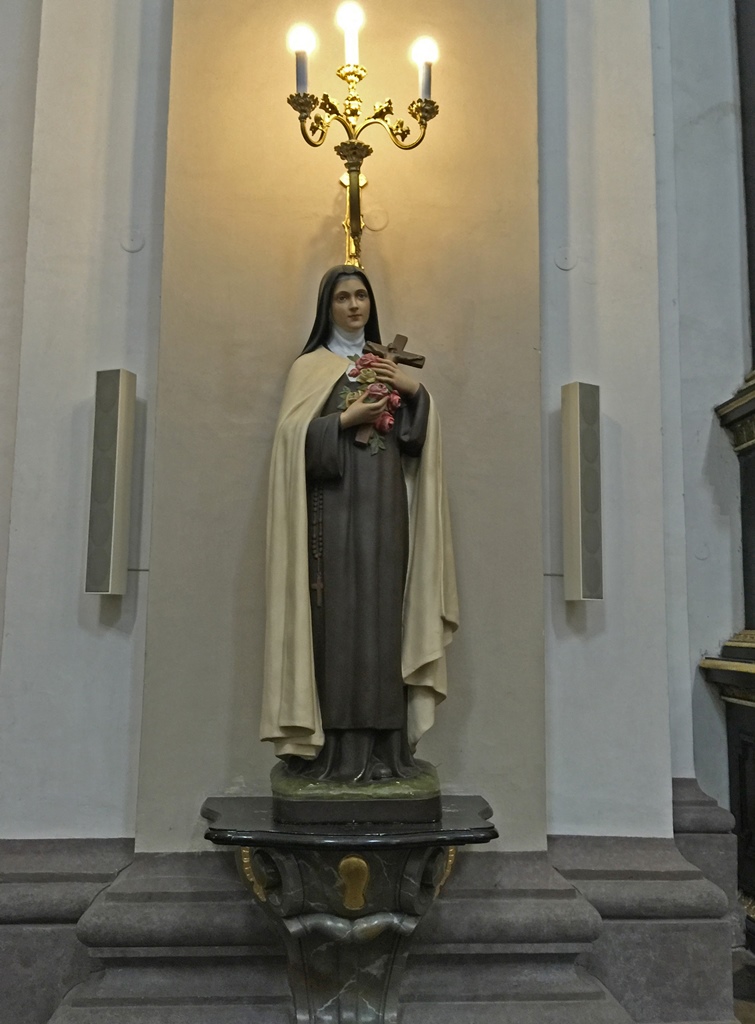
Statue of St. Teresa
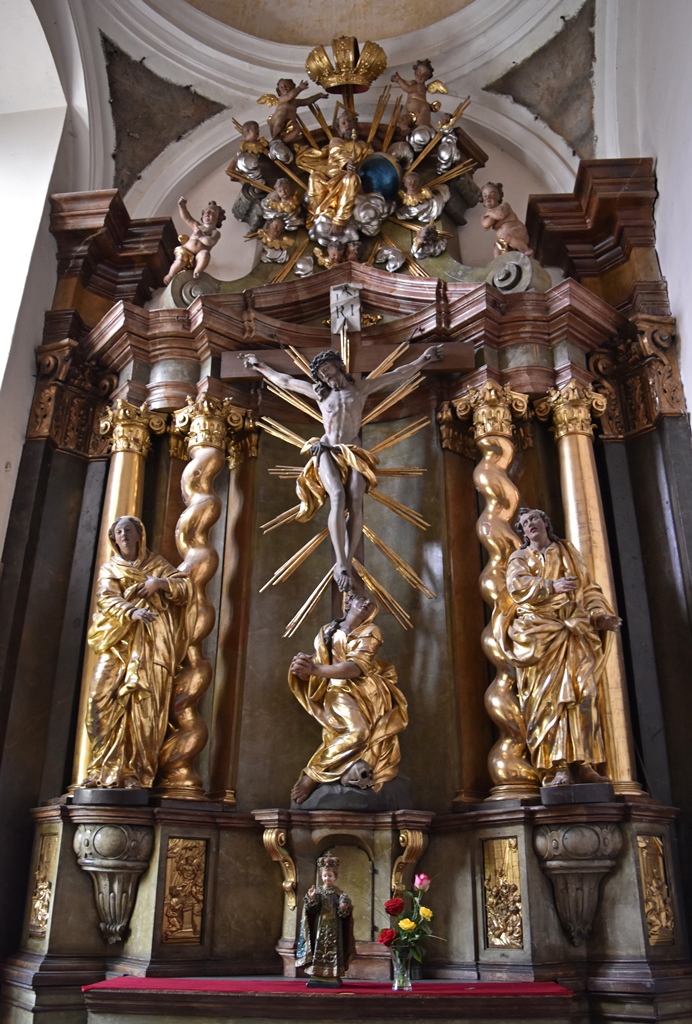
Chapel of St. Cross

Side Altars (Epistle Side)
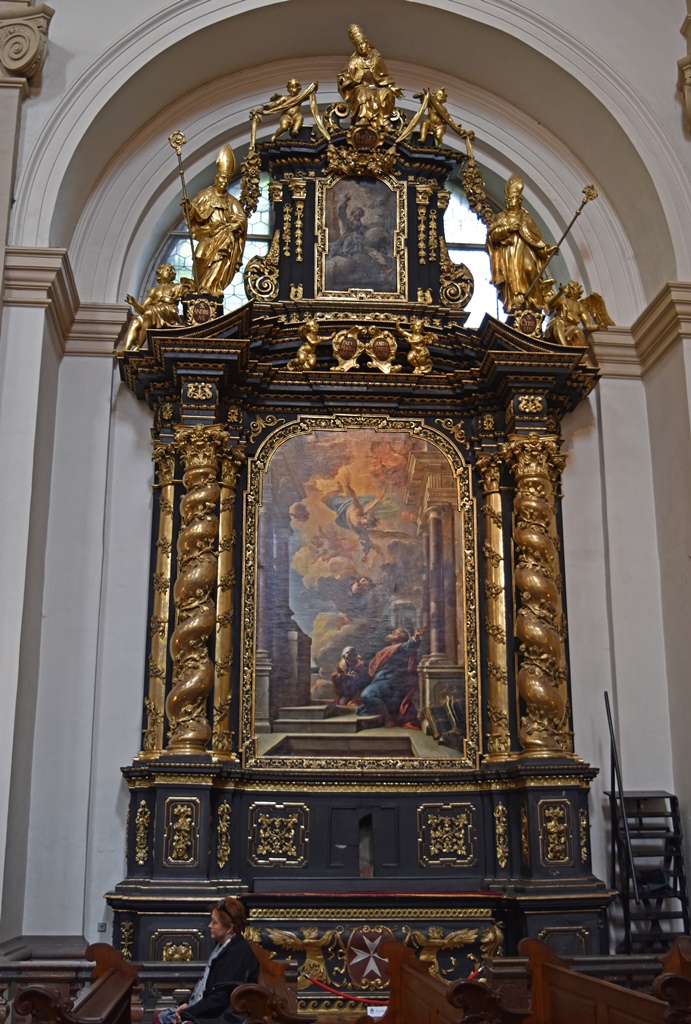
Altar of St. Joachim and St. Anna
We took our leave of the Infant, leaving him to deal with the entreaties of our fellow visitors,
and went back out of the church the same way we’d come in. We briefly got our bearings and then
set out for our next destination – another church, this one named after St. Nicholas.

